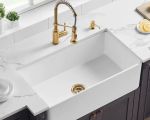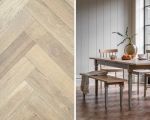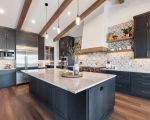- 1- Understanding-the-Role-of-Kitchen-Backsplashes
- 2- Key-Factors-in-Choosing-Backsplash-Material
- 3- Popular-Backsplash-Material-Options-with-Pros-and-Cons
- 4- Real-World-Examples-of-Kitchen-Backsplash-Choices
- 5- Finding-Expert-Advice-and-Resources
1. Understanding the Role of Kitchen Backsplashes
The kitchen backsplash is more than just a decorative element; it plays a critical role in protecting your walls from cooking splashes, grease, and moisture. Knowing the importance of this feature helps homeowners appreciate why choosing the right material matters. A well-selected backsplash not only enhances the kitchen’s aesthetic but also ensures durability and easy maintenance.
1.1 Functional Benefits
Backsplashes safeguard the wall area between the countertop and cabinets, an area prone to stains and water damage. This functional aspect influences material choice significantly.
1.2 Style and Design Impact
The backsplash often serves as a focal point in kitchen design, complementing cabinets, countertops, and appliances. Selecting a material that aligns with your overall style vision is essential.
2. Key Factors in Choosing Backsplash Material
When considering tips for choosing the right backsplash material for your kitchen, several critical factors come into play to ensure the perfect balance between form and function.
2.1 Durability and Maintenance
Choose materials that withstand heat, moisture, and frequent cleaning. Some options require more upkeep than others, so factor in your lifestyle and cleaning preferences.
2.2 Cost and Budget
Backsplash materials vary widely in price. While natural stone may offer timeless beauty, glass or ceramic tiles can provide stylish looks at a lower cost. Knowing your budget helps narrow the options.
2.3 Installation Complexity
Some materials demand professional installation due to their weight or fragility. If DIY is your goal, selecting easier-to-install materials may save time and costs.
2.4 Compatibility with Kitchen Style
Modern kitchens might benefit from sleek glass or stainless steel backsplashes, while rustic kitchens often pair well with natural stone or brick. Understanding your kitchen’s design language guides your selection.
3. Popular Backsplash Material Options with Pros and Cons
Exploring common backsplash materials helps clarify their unique benefits and drawbacks.
3.1 Ceramic and Porcelain Tiles
These tiles are versatile, affordable, and easy to clean. Their wide variety of colors and patterns makes them a popular choice. However, grout maintenance can require attention to prevent discoloration.
3.2 Glass
Glass backsplashes offer a glossy, modern look and are resistant to stains and water. They can reflect light beautifully, enhancing kitchen brightness. The downside is higher cost and potential for chipping.
3.3 Natural Stone
Materials like marble, granite, and slate provide elegance and durability but often come at a premium price. They require sealing to prevent staining and can be heavy and complex to install.
3.4 Stainless Steel
Ideal for contemporary or industrial-style kitchens, stainless steel backsplashes resist heat and are easy to clean. Fingerprints and scratches may be visible, requiring regular upkeep.
4. Real-World Examples of Kitchen Backsplash Choices
Take Emily, a homeowner who remodeled her kitchen with a glass backsplash that complemented her modern appliances perfectly. Her choice not only elevated the space aesthetically but also made cleaning easier after cooking messy meals.
On the other hand, John opted for a classic subway tile backsplash in his vintage-style kitchen, balancing style with budget-friendly materials. His grout color choice minimized the appearance of stains, showcasing a thoughtful design decision.
5. Finding Expert Advice and Resources
Choosing the right backsplash material can feel overwhelming given the numerous options and factors to consider. For expert advice, tailored recommendations, and high-quality product selections, Improvement offers a comprehensive platform to help homeowners make informed decisions and find the best materials suited to their kitchen needs.








